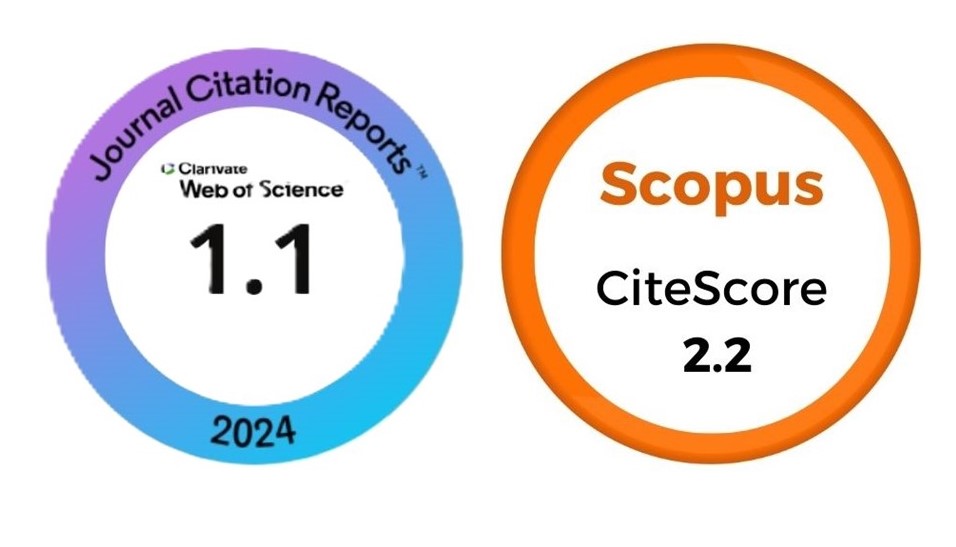Estabelecimento e produção de plantas de bastão-do-imperador associadas a inoculação com Fungos Micorrízicos Arbusculares
DOI:
https://doi.org/10.1590/2447-536X.v29i3.2639Palavras-chave:
Etlingera elatior, Glomeromycota, cultivo in vitro, flores tropicaisResumo
Tradicionalmente, a forma de propagação comercial do bastão-do-Imperador é por meio de rizomas. A micropropagação (M) é uma alternativa viável que garante a qualidade genética e fitossanitária das plântulas. No entanto, as condições do cultivo in vitro podem causar distúrbios morfofisiológicos resultando na morte ou dificuldades no processo de aclimatização e estabelecimento das mudas sob condições de campo. Dessa forma, Fungos Micorrízicos Arbusculares (FMA) têm sido utilizados em algumas culturas com o intuito de amenizar os efeitos drásticos durante a aclimatização e estabelecimento de plântulas micropropagadas no campo. Nesse sentido, o objetivo desse estudo foi avaliar as formas de implantação e eficácia da micropropagação e da inoculação com FMA no estabelecimento e produção de plantas de bastão-do-Imperador. O plantio foi realizado em telado com sombreamento (50%) e utilizou-se diferentes formas de implantação; via rizoma (RIZ) e através de plântulas micropropagadas com (M+FMA) e sem (M-FMA) inoculação com fungos micorrízicos arbusculares. Foram realizadas avaliações de crescimento, fenologia e colonização micorrízica ao longo de um ano de cultivo. A micropropagação, independente da inoculação com FMA, favoreceu melhor desenvolvimento em altura e número de perfilhos quando comparada às plantas obtidas de mudas via RIZ. Conclui-se que plantas micropropagadas de E. elatior apresentaram emissão de perfilhos mais precoce, melhor desenvolvimento e estabelecimento inicial no campo. Adicionalmente, as formas de implantação de E. elatior via rizoma e via micropropagação com ou sem inoculação de FMA produzem inflorescências com as características mínimas exigidas para comercialização.
Downloads
Referências
ARAÚJO, P.G.P.; ALBUQUERQUE FILHO, J.C.C.; SILVA, S.S.L.; CASTRO, C.E. F.; GONÇALVES, C.; LOGES, V. Characterization and selection of torch ginger for cut flower. Ornamental Horticulture, v.24, n.4, p.371- 379, 2018. https://doi.org/10.14295/oh.v24i4.1207
BASIRU, S.; HIJRI, M. Does Commercial Inoculation Promote Arbuscular Mycorrhizal Fungi Invasion? Microorganisms, v.10, n.2, 1-8, 2022. https://doi.org/10.3390/microorganisms10020404
BEGUM, N.; QIN, C.; AHANGER, M. A.; RAZA, S.; KHAN, M. I.; ASHRAF, M.; AHMED, N.; ZHANG, L. Role of arbuscular mycorrhizal fungi in plant growth regulation: implications in abiotic stress tolerance. Frontiers in Plant Science, v.10, n.1068, 1-15, 2019. https://doi.org/10.3389/fpls.2019.01068
BRITO, V.N; TELLECHEA, F.R.F.; HEITOR, L.C.; FREITAS, M. S. M.; MARTINS, M. A. Fungos micorrízicos arbusculares e adubação fosfatada na produção de mudas de paricá. Ciência Florestal, v. 27, n. 2, p. 485-497, 2017. https://doi.org/10.5902/1980509827730
DUBREUIL, V.; FANTE, K.P.; PLANCHON, O.; SANT’ANNA NETO, J.L. The types of annual climates in Brazil: an application of the classification of Köppen from 1961 to 2015. Revista Franco-Brasileira de Geografia, n.37, 2018. https://doi.org/10.4000/confins.15738
EMBRAPA. Empresa Brasileira de Pesquisa Agropecuária. Sistema brasileiro de classificação de solos. Embrapa, Brasília, Brasil. 2013. 306p.
FIGUEIREDO, J.R.M.; PAIVA, P.D.O.; SILVA, D.P.C.; PAIVA, R.; MESQUITA, R.; SOUZA, R.R.; REIS, M.V. Temperature and GA3 on ROS and cytogenetic stability during in vitro cultivation of strelitzia zygotic embryos. Ciência e Agrotecnologia, v. 45, n.e020220, p.1-9, 2021. https://doi.org/10.1590/1413-7054202145020220
GERDEMANN, J.W.; NICOLSON, T.H. Spores of mycorrhizal endogone species extracted from soil by wet sieving and decanting. Transactions of the British Mycological Society, v.46, n.2, p.235–244, 1963. http://dx.doi.org/10.1016/S0007-1536(63)80079−0
GIOVANNETTI, M.; FORTUNA, P.; CITERNESI, A.S.; MORINI, S.; NUTI, M. P. The occurrence of anastomosis formation and nuclear exchange in intact arbuscular mycorrhizal networks. The New Phytologist, v.151, n.3, p.717–724, 2001. http://dx.doi.org/10.1046/j.0028-646x.2001.00216.x
JENKINS, W. R. A rapid centrifugal-flotation technique for separating nematodes from soil. Plant Disease Report, v.48, n.9, p.692, 1964.
KALAMULLA, R.; SANDARUWAN, D.; KARUNARATHNA, S.C.; STEPHENSON, S.L.; TIBPROMMA, S.; ELGORBAN, A.M.; AL-REJAIE, S.; YAPA, P.N.; Suwannarach, N. Assessment of community dynamics of arbuscular mycorrhizal fungi in the rice (Oryza sativa L.) rhizosphere and potential application as biofertilizer. Sustainability, v.14, n.24, 16537, 2022. https://doi.org/10.3390/su142416537
KAPOOR, R.; SHARMA, D.; BHATNAGAR, A.K. Arbuscular mycorrhizae in micropropagation systems and their potential applications. Scientia Horticulturae, v.116, p.227-239, 2008. https://doi.org/10.1016/j.scienta.2008.02.002
LINO, I. A. N.; SILVA, D. K A.; MARTINS, J. C. R.; SAMPAIO, E. V. S. B.; MAIA, L. C. Mycorrhizal inoculation and application of cattle manure in field-grown maize in semiarid conditions. Experimental Agriculture, v.55, n.6, p.1–9, 2018. http://dx.doi.org/10.1017/S0014479718000443
LOGES, V.; COSTA, A.S.; GUIMARÃES, W.N.R.; TEIXEIRA, M.C.F. Potencial de mercado de bastão-do- imperador e sorvetão. Revista Brasileira de Horticultura Ornamental, v.14, n. 1, p.15–22, 2008. http://dx.doi.org/10.14295/rbho.v14i1.225
LOPES, E.A.P.; SILVA, A.D.S.; MERGULHÃO, A.C.S.; SILVA, E.V.N.; SANTIAGO, A.D.; FIGUEIREDO, M.V.B. Co-inoculation of growth promoting bacteria and glomus clarum in micropropagated cassava plants. Revista Caatinga, v. 32, n. 1, p.152-16, 2019. http://dx.doi.org/10.1590/1983-21252019v32n116rc
MURASHIGE, T., SKOOG, F. A revised medium for rapid growth and bioassays with tobacco tissue cultures. Physiologia Plantarum, v.15, n.3, p.473–497, 1962. http://dx.doi.org/10.1111/j.1399-3054.1962.tb08052.x
PHILLIPS, J. M.; HAYMAN, D.S. Improved procedures for clearing roots and staining parasitic and vesicular- arbuscular fungi for rapid assessment of infection. Transactions of the British Mycological Society, v.55, n.1, p.158–161, 1970. http://dx.doi.org/10.1016/S0007-1536(70)80110-3.
PINHEIRO, M.V.M.; RÍOS-RÍOS, A.M.M.; CRUZ, A.C.F.; ROCHA, D.I.; ORBES, M.Y.; SALDANHA, C.W.; BATISTA, D.S.; CARVALHO, A.C.P.P.; OTONI, W.C. CO2 enrichment alters morphophysiology and improves growth and acclimatization in Etlingera Elatior (Jack) R.M. Smith micropropagated plants. Brazilian Journal of Botany, v.44, n. 3, p.799–809, 2021. https://doi.org/10.1007/s40415-021-00741-9
PRAY, T.J.; NISSIM, W.G.; ST-ARNAUD, M.; LABRECQUE, M. Investigating the effect of a mixed mycorrhizal inoculum on the productivity of biomass plantation willows grown on marginal farm land. Forests, v.9, n.4, 185, 2018. https://doi.org/10.3390/f9040185
SALOMON, M.J.; DEMARMELS, R.; WATTS- WILLIAMS, S.J.; MCLAUGHLIN, M.J.; KAFLE, A.; KETELSEN, C.; SOUPIR, A.; BÜCKING, H.; CAVAGNARO, T.R.; VAN DER HEIJDEN, M.G.A. Global evaluation of commercial arbuscular mycorrhizal inoculants under greenhouse and field conditions. Applied Soil Ecology, v. 169, 104225, 2022. https://doi.org/10.1016/j.apsoil.2021.104225.
SILVA, A.R.; MELO, N.F.; YANO-MELO, A.M. Acclimatization of micropropagated plants of Etlingera elatior (Jack) R. M. Sm. inoculated with arbuscular mycorrhizal fungi. South African Journal of Botany, v.113, n.1, p.164–169, 2017. http://dx.doi.org/10.1016/j.sajb.2017.08.014
SILVA, D.P.C.; PAIVA, P.D.O.; HERRERA, R.C.; PORTO, J.M.P.; REIS, M.V.; PAIVA, R. Effectiveness of silicon sources for in vitro development of gerbera. Plant Cell Tissue Organ and Culture, v.141, n. 1, p.77–85, 2020. https://doi.org/10.1007/s11240-020-01768-8
SOUZA, R.R.; BECKMANN-CAVALCANTE, M. Z.; SILVA, E.M.; AMARAL, G.C.; BRITO, L.P.S.; AVELINO, R.C. Alterações morfofisiológicas e crescimento de helicônias em função de diferentes ambientes de sombreamento. Comunicata Scientiae, v.7, n.2, p.214- 222, 2016. https://doi.org/10.14295/CS.v7i2.884
SOUZA, R.R.; PAIVA, P.D.O.; SOUZA, A.R.; SILVA, R.R.; SILVA, D.P.C.; REIS, M.V.; PAIVA, R. Morpho-anatomical changes and antioxidant enzyme activity during the acclimatization of Genipa americana. Acta Physiologiae Plantarum, v.43, n.93, p. 1-10, 2021. https://doi.org/10.1007/s11738-021-03263-9
ULISSES, C.; MORAIS, M.B.; BARBOSA, M.R.; ALBUQUERQUE, C.C.; WILLADINO, L.; CAMARA, T.R. Physiological development of zygotic embryos of heliconias propagated in vitro and conventionally. Horticultura Brasileira, v.36, n.2, p. 229-234, 2018. https://doi.org/10.1590/S0102-053620180214
YAMAWAKI, K.; MATSUMURA, A.; HATTORI, R.; TARUI, A.; HOSSAIN, M.A.; OHASHI, Y; DAIMON, H. Effect of inoculation with arbuscular mycorrhizal fungi on growth, nutrientuptakeandcurcuminproductionofturmeric (Curcuma longa L.). Agricultural Sciences, v.4, n.2, p.66- 71, 2013. http://dx.doi.org/10.4236/as.2013.42011
YUNUS, M. F.; ISMAIL, N. A.; SUNDRAM, T. C. M.; ZAINUDDIN, Z.; ROSLI, N. M. Commercial potentials and agronomic status of Etlingera elatior, a promising horticulture plant from Zingiberaceae family. Journal of Agricultural Science, v.43, n.3, p.665-678, 2021. http://doi.org/10.17503/agrivita.v43i3.2957
ZHANG, Y.; LI, Y.; WANG, R.; XU, L.; LI, M.; LIU, Z.; WU, Z.; ZHANG, J.; YU, G.; HE, N. Spatial variation of leaf chlorophyll in northern hemisphere grasslands. Frontiers in Plant Science, v.11, n. 1244, p.1-14, 2022. http://dx.doi.org/10.3389/fpls.2020.01244
Downloads
Publicado
Edição
Seção
Licença
Copyright (c) 2023 Ornamental Horticulture

Este trabalho está licenciado sob uma licença Creative Commons Attribution 4.0 International License.








